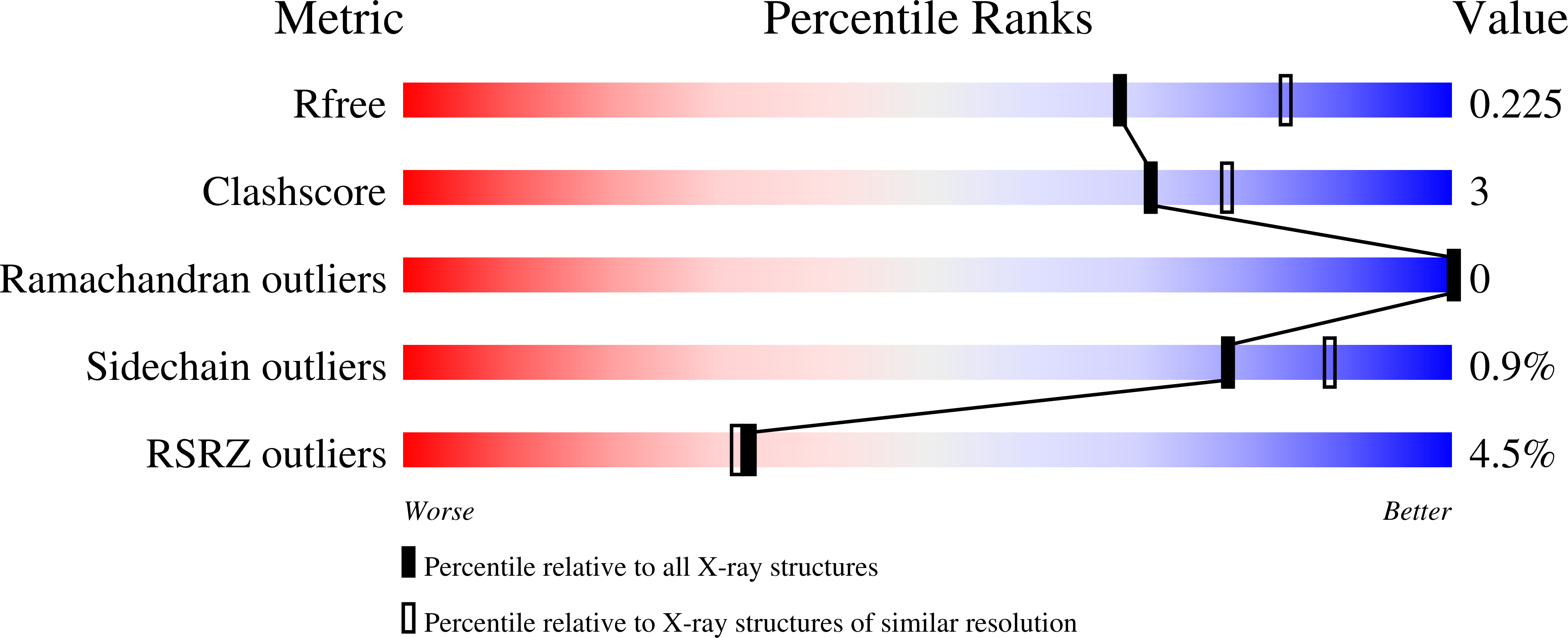The mechanism of substrate-controlled allosteric regulation of SAMHD1 activated by GTP.
Zhu, C.F., Wei, W., Peng, X., Dong, Y.H., Gong, Y., Yu, X.F.(2015) Acta Crystallogr D Biol Crystallogr 71: 516-524
- PubMed: 25760601
- DOI: https://doi.org/10.1107/S1399004714027527
- Primary Citation of Related Structures:
4RXO, 4RXP, 4RXQ, 4RXR, 4RXS - PubMed Abstract:
SAMHD1 is the only known eukaryotic deoxynucleoside triphosphate triphosphohydrolase (dNTPase) and is a major regulator of intracellular dNTP pools. It has been reported to be a potent inhibitor of retroviruses such as HIV-1 and endogenous retrotransposons. Previous crystal structures have revealed that SAMHD1 is activated by dGTP-dependent tetramer formation. However, recent data have indicated that the primary activator of SAMHD1 is GTP, not dGTP. Therefore, how its dNTPase activity is regulated needs to be further clarified. Here, five crystal structures of the catalytic core of SAMHD1 in complex with different combinations of GTP and dNTPs are reported, including a GTP-bound dimer and four GTP/dNTP-bound tetramers. The data show that human SAMHD1 contains two unique activator-binding sites in the allosteric pocket. The primary activator GTP binds to one site and the substrate dNTP (dATP, dCTP, dUTP or dTTP) occupies the other. Consequently, both GTP and dNTP are required for tetramer activation of the enzyme. In the absence of substrate binding, SAMHD1 adopts an inactive dimer conformation even when complexed with GTP. Furthermore, SAMHD1 activation is regulated by the concentration of dNTP. Thus, the level of dNTP pools is elegantly regulated by the self-sensing ability of SAMHD1 through a novel activation mechanism.
Organizational Affiliation:
School of Life Sciences, Tianjin University, Tianjin, People's Republic of China.

















